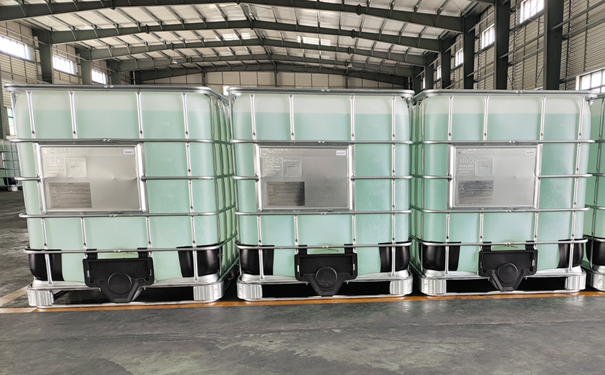Potassium phosphite is a fungicide fertilizer that differs fundamentally from potassium dihydrogen phosphate in its uses, mechanism of action, and formulation. potassium phosphite is typically available as an aqueous solution with varying concentrations or as a solid powder. A common market indicator for potassium phosphite is 0-520-340. What does this indicator mean? How is it calculated? How should we understand it? Let's explain it in detail.

1. Macronutrient water-soluble fertilizers typically express their content in terms of nitrogen, phosphorus, and potassium. The 0 here indicates that the potassium phosphite aqueous solution contains no nitrogen, so it is marked as 0. Of course, some formulas do contain nitrogen, and they can be combined with organic nitrogen, inorganic nitrogen, nitrate nitrogen, ammonium nitrogen, and other nitrogen. However, it's important to note that many nitrogen-containing fertilizers are alkaline, and they may react with potassium phosphite during the compounding process. This reaction can affect the effectiveness of the formula and the stability of water-soluble fertilizers, especially those containing trace elements. Therefore, careful analysis is necessary to avoid this. Which trace elements and fertilizers react with potassium phosphite? If you're unsure, please contact us. We can eliminate any unfavorable factors based on your formula and replace them with favorable fertilizer components, providing guidance on optimizing your fertilizer formulation.
2. 520 doesn't mean "I love you" or Valentine's Day. The 520 here refers to the phosphorus content in the water-soluble fertilizer. This content is not stated as a percentage, but in g/L. However, it's important to note that some fertilizer industries require phosphorus pentoxide (P2O5) to be labeled. Potassium phosphite doesn't contain P2O5, only phosphorus trioxide (P2O3). Therefore, the labeling of 520 strictly translates the P2O3 content into P2O5 using the phosphorus content, resulting in a phosphorus content of 520 g/L. If you're interested in calculating how to convert phosphorus trioxide (P2O3) to phosphorus pentoxide (P2O5), please contact the technical department of Suzhou Lianxiong Fine Chemical Technology Co., Ltd.
The meaning of 3,340 is relatively simple; it primarily represents the potassium oxide (K2O) content, also known as the potassium content. The content here is expressed in g/L, not a percentage. Potassium oxide has a similar function to potassium in potassium dihydrogen phosphate, potassium pyrophosphate, and potassium carbonate.
In summary, the two values of 520-340 for potassium phosphite represent the phosphorus and potassium contents, respectively, in g/L. The above content is a basic formula for many fertilizers. However, in actual production, many water-soluble fertilizer manufacturers add varying proportions of macronutrients and trace elements to potassium phosphite. Some even replace potassium phosphite with potassium dihydrogen phosphate to reduce costs. This practice is highly undesirable, as the two products have completely different effects. Potassium phosphite often flocculates or precipitates during compounding, and preventing precipitation is a key issue in fertilizer compounding. This can be effectively avoided by adding ion retainers or modifying fertilizer components. If you have any questions about the compounding, stability, synergy, and other technical aspects of potassium phosphite, please feel free to discuss them with us.
Tel:+86-512-36622455
Fax:+86-512-36874501
Phone:+86-13358057724
Email:hxo@hxochem.com
Add:No. 1377, Fuchunjiang Road, Kunshan Development Zone, Suzhou, Jiangsu, China